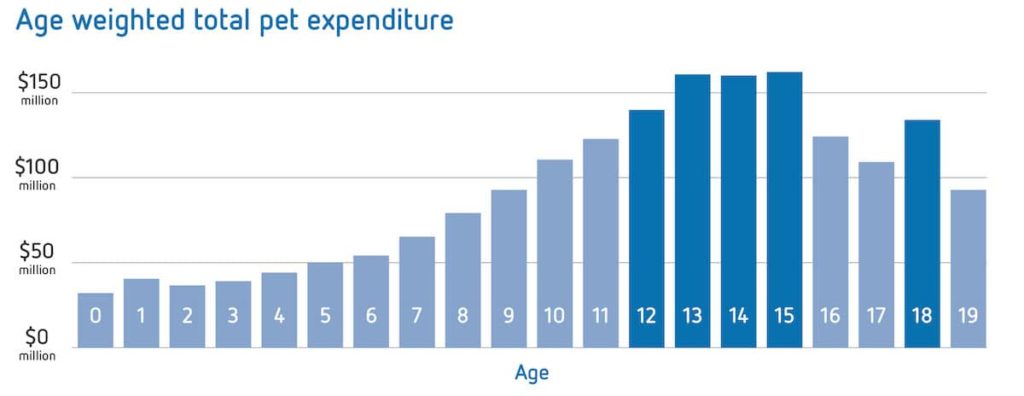Pets, similar to humans, are living longer due to advances in medicines and health care. PetSure data indicates health-related expenses gradually increase with age and peak at 13-15 years of age.
For pets, problems with the musculoskeletal system are the biggest contributors to total costs. Issues with the alimentary or gastrointestinal tract/digestive system and hair/skin conditions are the next two major health expenditures.
As treatment options for tumours and cancer have increased, consequently so have treatment costs. Cardiovascular disease is on the increase, particularly among cats.

The level of veterinary care available to pets has improved exponentially in recent years, driven by an increase in specialist veterinarians and referral/emergency hospitals, as well as the availability of new diagnostic tools such as CT, MRI, ECG and ultrasound.
Between 2013 and 2018, the availability and usage of MRI grew significantly (with the use of MRI up by 192%, CT-scan up 163% and ultrasound up 91%).
Over the same time, the proportion of specialist visits increased by 18% (from 4.1% to 4.9%) and the specialist referral rate (within 60 days of first general practice (GP) visit), increased by 28% (1.8% to 2.3%). As diseases are identified earlier, there is better prognosis for pets’ recovery and continued health.
With age, diseases such as cancer become more likely, so oncology treatment options are increasingly used. Human cancer treatments such as surgery, chemotherapy, radiation therapy and vaccinations, are all being utilised in treating pets.
Pet insurance can help by covering a portion of the eligible vet bill if the unexpected happens. Because it is difficult to predict the costs of veterinary care, it can help to have measures in place to help prepare for the unexpected. Check out our partner network and explore our policy tools to find a pet insurance policy.
Not all conditions or items are covered by Pet Insurance. Refer to the applicable Product Disclosure Statement for information about coverage and exclusions.








